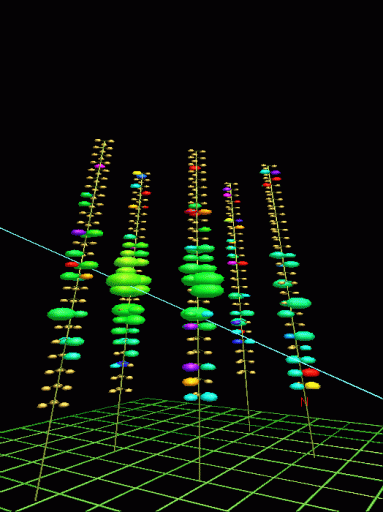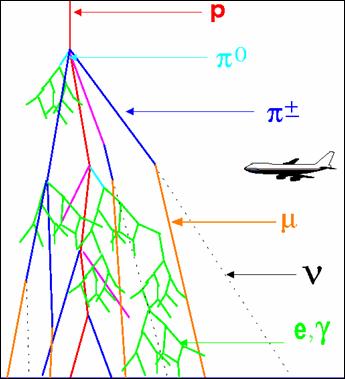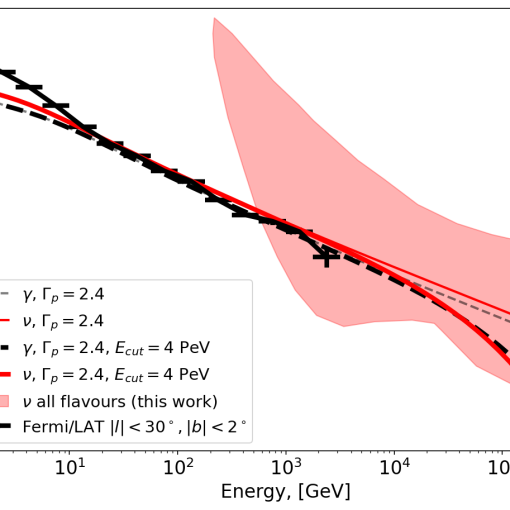January 29th, 2007
|
29 janvier 2007
|
|||
| Since the operation of the first two lines, the construction of the detector took place as originally planned, thanks to the effort of the whole collaboration. The integration of the lines went on in Dapnia (CEA Saclay) and CPPM (CNRS/In2p3, Marseille) from the elements built on site or coming from other laboratories, in particular from Italy (Bari, Catania and Pisa) where the electronics modules are assembled end tested.
Line 3 was deployed on November 29th 2006, line 4 and 5 on January 8th and 16th, 2007, respectively. On January 29th, the Antares collaboration brought into service a detector with 5 full lines. |
Depuis la mise en opération des deux premières lignes, la construction du détecteur s’est poursuivie au rythme escompté, grâce aux efforts de l’ensemble de la collaboration L’intégration des lignes s’est poursuivie au Dapnia (CEA Saclay) et au CPPM (CNRS/In2p3, Marseille), à partir des éléments construits sur place ou provenants d’autres laboratoires, en particulier d’Italie (Bari, Catane et Pise) où les modules électroniques sont assemblés et testés.
La ligne 3 a été déployée le 29 novembre 2006, les lignes 4 et 5 respectivement le 8 et le 16 janvier 2007. Le 29 janvier la collaboration Antares mettait donc en service un détecteur de 5 lignes complètes. |
|||
|
||||
| The detector is bombarded by downward goind muons produced in the interaction of cosmic rays in the atmosphere. These muons are detected from their distinctive Tcherenkov light if they succeed in crossing the 2000 metres of water above the detector.
These muons arrive one by one or in bunches in which they can be separated by a few metres. In Antares, they are reconstructed as unique tracks. The number of downward going muons is considerably larger than the upward going muons issued from the neutrino interactions in the Earth crust. In Antares it is expected to detect one upward going muon for 10000 downward going muons. A small fraction of downward going muons that would be reconstructed in the upward direction would interfere with the observation of neutrinos. |
Ce détecteur est bombardé de muons descendants issus de l’interaction du rayonnement cosmique dans l’atmosphère. Ces muons, s’ils réussissent à traverser les 2000 mètres d’eau qui séparent la surface de la mer du haut du détecteur, sont détectés par leur lumière Tcherenkov caractéristique. Ces muons peuvent arriver un à un ou en groupe, en formation serrée (espacés de quelques mètres). Dans Antares, ils seront reconstruits comme une trace unique. Le nombre de ces muons descendant et considérablement plus important que les muons montants issus de l’interaction de neutrinos dans la croute terrestre. Dans Antares, on s’attend à détecter un muon montant pour 10000 muons descendants. Une petite fraction de muons descendants reconstruits à tort comme montants peut donc gêner l’observation des neutrinos. |
|||
|
||||
| Only a tri-dimensional detector equipped with a large number of photomultipliers can isolate the upwardgoing signal and measure with precison the arrival direction of the particle.
Once this signal is isolated, the search for a far-away cosmic neutrino source can begin. On January 29, the start of a detector with 375 eyes, spread ofther 5 lines, marked the beginning of neutrino astonomy in Antares. |
Seul un détecteur tridimensionnel disposant d’un nombre suffisant de photodétecteurs permet d’isoler le signal montant et de mesurer avec précision la direction d’arrivée de la particule. Une fois ce signal montant isolé, il faut y rechercher les traces d’une source lointaine de neutrinos cosmiques. Le 29 janvier, en mettant en marche un détecteur de 375 yeux, répartis sur 5 lignes, l’astronomie neutrino a débutée dans Antares. |
|||





